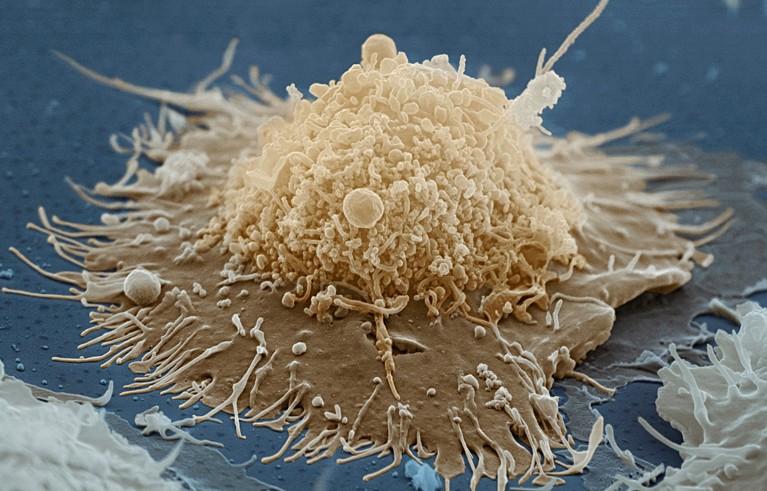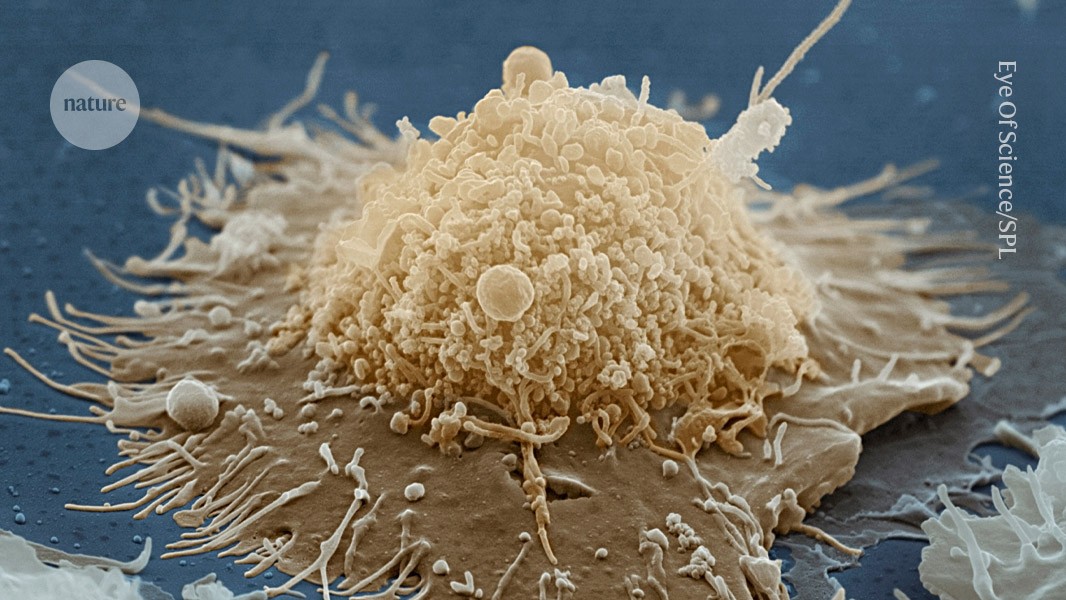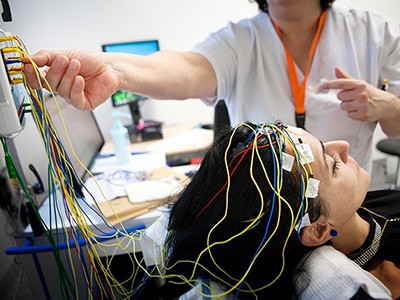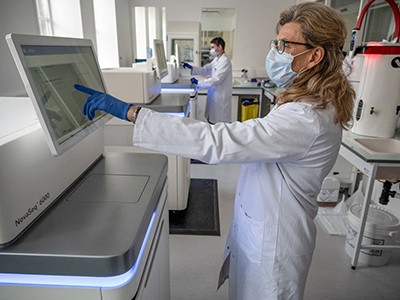
The AI analyses gene sequences linked to receptors on the surface of B cells (pictured) and T cells. Credit: Eye Of Science/Science Photo Library
Researchers have developed an artificial intelligence (AI) tool that can diagnose a range of infections and health conditions in one sweep, by screening immune-cell gene sequences in blood samples.
In a study of nearly 600 people, published in Science on 20 February1, the tool identified whether participants were healthy or had COVID-19, type 1 diabetes, HIV or the autoimmune disease lupus, as well as whether they had recently received a flu vaccine.
Neuronostics: Accelerating the diagnosis of epilepsy with computer modelling
“This is a one-shot sequencing approach that captures everything that your immune system has been exposed to,” says Sarah Teichmann, a molecular biologist at the University of Cambridge, UK.
The tool is not yet ready for clinical use, but with more work to refine the approach, it could one day help clinicians to deal with “conditions that today don’t have definitive tests”, says study co-author Maxim Zaslavsky, a computer scientist at Standford University in California.
“From a real-world point of view, the promise would be to have one foundation model for the immune system where you can read out everything that a person has seen and then link it to their health care,” says Teichmann. “There are a lot of steps on the pathway to realizing that down the line, but this is one step.”
Natural diagnostic
The immune system holds an extensive record of past and current illnesses through its two major cell types — B cells and T cells. B cells produce antibodies that attach to viruses and harmful molecules, whereas T cells activate other responses or kill infected cells.
When a person has an infection, or an autoimmune condition in which the body mistakenly attacks its own tissues, their B cells and T cells increase in number and start to produce specific surface receptors. Sequencing the genes that encode these receptors can unlock the person’s unique record of diseases and infections.
“The immune system is a natural diagnostic, and if we just learn how it can do it, then we could also do it,” says Victor Greiff, a computational immunologist at the University of Oslo.
Current diagnostic tools “make some but little use of the immune system’s record of disease exposures”, says Zaslavsky, but most previous efforts have focused on sequences from either B or T cells. “Combining them for this fuller picture of immune activity gives us a more complete readout of what could be happening.”
Super-speedy sequencing puts genomic diagnosis in the fast lane
Zaslavsky and his colleagues built an AI tool that combines six machine-learning models to analyse gene sequences encoding key regions in B-cell and T-cell receptors and pick out patterns associated with particular diseases.




